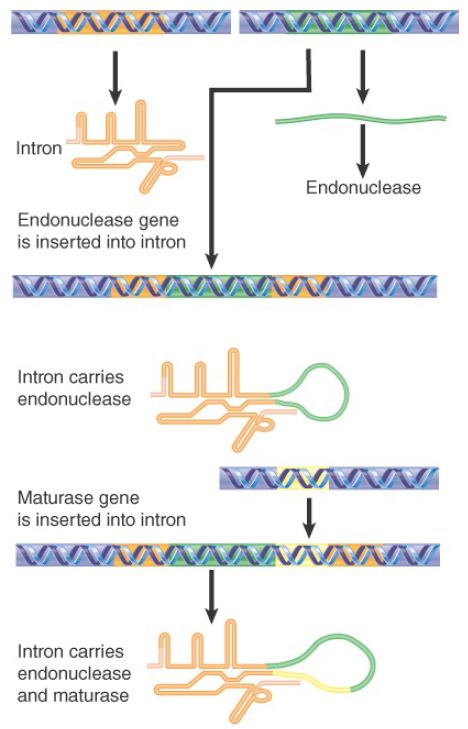

النبات

مواضيع عامة في علم النبات

الجذور - السيقان - الأوراق

النباتات الوعائية واللاوعائية

البذور (مغطاة البذور - عاريات البذور)

الطحالب

النباتات الطبية


الحيوان

مواضيع عامة في علم الحيوان

علم التشريح

التنوع الإحيائي

البايلوجيا الخلوية


الأحياء المجهرية

البكتيريا

الفطريات

الطفيليات

الفايروسات


علم الأمراض

الاورام

الامراض الوراثية

الامراض المناعية

الامراض المدارية

اضطرابات الدورة الدموية

مواضيع عامة في علم الامراض

الحشرات


التقانة الإحيائية

مواضيع عامة في التقانة الإحيائية


التقنية الحيوية المكروبية

التقنية الحيوية والميكروبات

الفعاليات الحيوية

وراثة الاحياء المجهرية

تصنيف الاحياء المجهرية

الاحياء المجهرية في الطبيعة

أيض الاجهاد

التقنية الحيوية والبيئة

التقنية الحيوية والطب

التقنية الحيوية والزراعة

التقنية الحيوية والصناعة

التقنية الحيوية والطاقة

البحار والطحالب الصغيرة

عزل البروتين

هندسة الجينات


التقنية الحياتية النانوية

مفاهيم التقنية الحيوية النانوية

التراكيب النانوية والمجاهر المستخدمة في رؤيتها

تصنيع وتخليق المواد النانوية

تطبيقات التقنية النانوية والحيوية النانوية

الرقائق والمتحسسات الحيوية

المصفوفات المجهرية وحاسوب الدنا

اللقاحات

البيئة والتلوث


علم الأجنة

اعضاء التكاثر وتشكل الاعراس

الاخصاب

التشطر

العصيبة وتشكل الجسيدات

تشكل اللواحق الجنينية

تكون المعيدة وظهور الطبقات الجنينية

مقدمة لعلم الاجنة


الأحياء الجزيئي

مواضيع عامة في الاحياء الجزيئي


علم وظائف الأعضاء


الغدد

مواضيع عامة في الغدد

الغدد الصم و هرموناتها

الجسم تحت السريري

الغدة النخامية

الغدة الكظرية

الغدة التناسلية

الغدة الدرقية والجار الدرقية

الغدة البنكرياسية

الغدة الصنوبرية

مواضيع عامة في علم وظائف الاعضاء

الخلية الحيوانية

الجهاز العصبي

أعضاء الحس

الجهاز العضلي

السوائل الجسمية

الجهاز الدوري والليمف

الجهاز التنفسي

الجهاز الهضمي

الجهاز البولي


المضادات الميكروبية

مواضيع عامة في المضادات الميكروبية

مضادات البكتيريا

مضادات الفطريات

مضادات الطفيليات

مضادات الفايروسات

علم الخلية

الوراثة

الأحياء العامة

المناعة

التحليلات المرضية

الكيمياء الحيوية

مواضيع متنوعة أخرى

الانزيمات
Some Autosplicing Introns Require Maturases
المؤلف:
JOCELYN E. KREBS, ELLIOTT S. GOLDSTEIN and STEPHEN T. KILPATRICK
المصدر:
LEWIN’S GENES XII
الجزء والصفحة:
21-5-2021
2734
Some Autosplicing Introns Require Maturases
Key concept
- Autosplicing introns may require maturase activities encoded within the intron to assist folding into the active catalytic structure.
Although group I and group II introns both have the capacity to autosplice in vitro, under physiological conditions they usually require assistance from proteins. In some examples of group I and group II splicing, the intron itself may encode maturase activities that are required to assist the splicing reaction. The maturase activity is part of the single open reading frame encoded by the intron. In the example of introns that encode homing endonucleases, the single protein product has both endonuclease and maturase activity. Mutational analysis shows that the two activities are independent. Structural analysis confirms the mutational data and shows that the endonuclease and maturase activities are provided by different active sites in the protein, each encoded by a separate domain. The coexistence of endonuclease and maturase activities in the same protein suggests a route for the evolution of the intron. FIGURE 1 suggests that the intron originated in an independent autosplicing element. Although Figure 1 depicts a group I intron, the process for group II introns is presumed to be similar. The insertion of a sequence encoding an endonuclease into this element gave it mobility. However, the insertion might well disrupt the ability of the RNA sequence to fold into the active structure. This would create pressure for assistance from proteins that could restore folding ability. The incorporation of such a sequence into the intron would maintain its independence.

FIGURE 1. The intron originated as an independent sequence encoding a self-splicing RNA. The insertion of the endonuclease sequence created a mobile homing intron. The insertion of the maturase sequence then enhanced the ability of the intron sequences to fold into the active structure for splicing.
However, some group II introns do not encode maturase activity. These introns may use proteins (comparable to intron-encoded maturases) that are instead encoded by sequences in the host genome. This suggests a possible route for the evolution of general splicing factors. The factor may have originated as a maturase that specifically assisted the splicing of a particular intron. The coding sequence became isolated from the intron in the host genome and
then it evolved to function with a wider range of substrates than the original intron sequence. The catalytic core of the intron could have evolved into a small nuclear RNA (snRNA).
 الاكثر قراءة في مواضيع عامة في الاحياء الجزيئي
الاكثر قراءة في مواضيع عامة في الاحياء الجزيئي
 اخر الاخبار
اخر الاخبار
اخبار العتبة العباسية المقدسة

الآخبار الصحية















 قسم الشؤون الفكرية يصدر كتاباً يوثق تاريخ السدانة في العتبة العباسية المقدسة
قسم الشؤون الفكرية يصدر كتاباً يوثق تاريخ السدانة في العتبة العباسية المقدسة "المهمة".. إصدار قصصي يوثّق القصص الفائزة في مسابقة فتوى الدفاع المقدسة للقصة القصيرة
"المهمة".. إصدار قصصي يوثّق القصص الفائزة في مسابقة فتوى الدفاع المقدسة للقصة القصيرة (نوافذ).. إصدار أدبي يوثق القصص الفائزة في مسابقة الإمام العسكري (عليه السلام)
(نوافذ).. إصدار أدبي يوثق القصص الفائزة في مسابقة الإمام العسكري (عليه السلام)


















